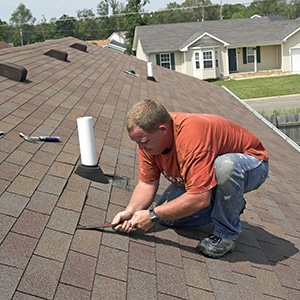
Roofing Contractors: 6 Roofing Mistakes To Avoid Making
— August 4, 2023The roof is the first line of defense against weather elements; therefore, you should give it attention. While this is the case, roofing contractors report that many homeowners don’t give it the attention it deserves resulting in them making a lot of mistakes. Here are some of the most common roofing mistakes and how to avoid making them on your roof:
Covering the old shingles instead of replacing them
Many homeowners will do this due to ignorance or when they are trying to save on money and time. While it might seem like a shortcut when you cover the old shingles instead of replacing them, it usually results in more problems.
When you place the new shingles on top of the old ones, you create areas for moisture and dirt to collect. As you might have guessed, this would lead to deterioration and increased damage to the roof.
For you to give the roof the great look and ensure that it lasts for a long time, you should remove the old shingles and place new ones. While the work will be more and even cost you more, it will be worth it in the long run.
Failing to use the nails properly
There are many ways in which you can improperly use the nails resulting in roofing problems. The most common one is using too few nails. Many homeowners and contractors will do this to save on money. While you will save a few coins, you won’t hold the shingles securely which reduces their lifespan.
When installing the roof, ensure that you hold every shingle with at least four nails. This way you are sure the shingle is held properly in place and won’t come off in the event it’s exposed to wind and other weather elements.
Another mistake that people make is nailing the shingles too high or too low which brings a number of problems. In some cases, you end up damaging the shingle. When nailing the pieces, you should note that the pieces have a nailing strip that you should use when nailing.
By properly using the nail strip, you ensure that the shingles are properly held in place. For example, when you use four nails on every shingle when you properly use the strip, you will end up having one shingle being held in place by eight nails. Which results in a strong roof that is properly done.
Reusing the old flashing
The role of the flashing is to prevent moisture from seeping into the house through the chimney, roof valleys, and skylights. When installing the roof, some homeowners and roofers try to cut corners by reusing the old flashing.
While the flashing might seem to be in good condition, it could be problematic in the long run, especially if your house is old. For you to be on the safe side, consider replacing the entire flashing.
Ignoring crickets behind the chimney
The cricket is a vital component when it comes to diverting water away from the chimney. Crickets are often made from metal, but there are others made from wood and shingles. During the installation of the roof, some people omit the crickets which result in water getting into the chimney and even into the house.
Do you want to keep your house warm? Properly install the crickets. Just like when installing the shingles, ensure that the crickets are of high quality and properly installed and nailed to the roof.
Improper overhang installation
In addition to the roof overhang giving your home an aesthetic appeal, it also protects your house from the risk of wind damage. When installing the roof, ensure that you give the roof the right amount of overhang.
For you to have peace of mind that the overhang provides your home with the protection it needs, use the right number of fasteners per shingle especially in the wind zone.
Using the wrong roofing materials for the slope of the roof
Roofing companies report that many people use the wrong materials when constructing the slope of their roofs. This results in water getting into the house. The best way of going about it is by using waterproof roofing materials for the roof. This calls for you to avoid asphalt shingles and other materials that would allow water to permeate through.



Leave a reply